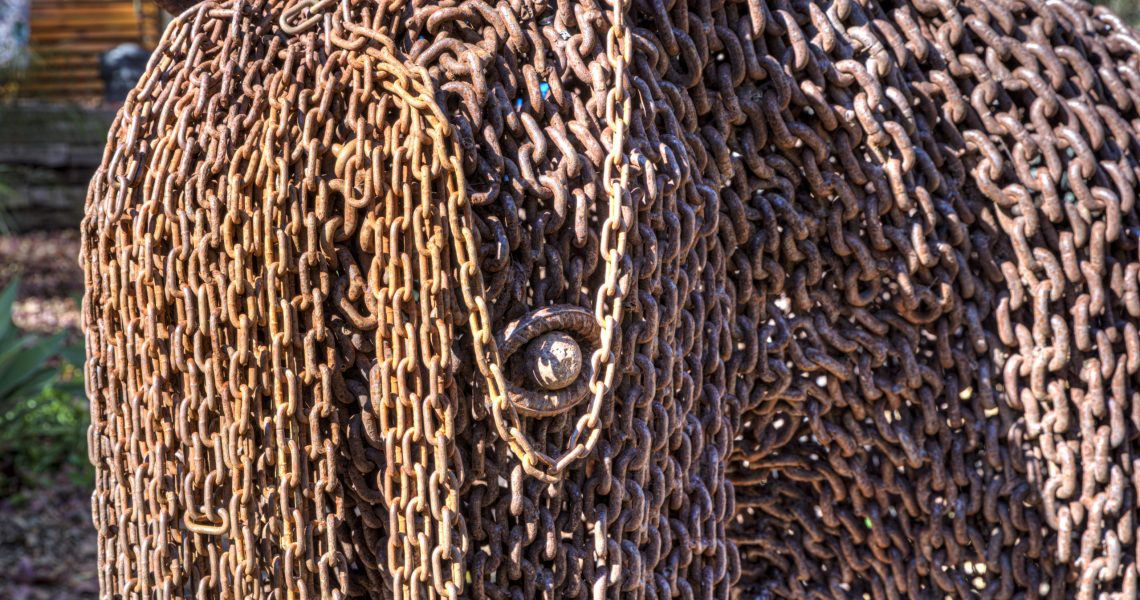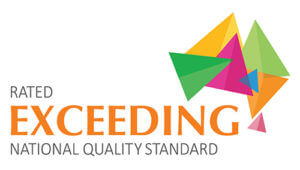Pachamama is such a unique place … I have felt it from my first visit. There are so many opportunities to stimulate one’s senses at Pachamama. Being amongst the nature and creativity is good for my wellbeing.
I was drawn to the sculptures at Pachamama from the moment I saw them because they spark thought and imagination. This is especially true of our life-sized chain horse named Dobby. She has taken residence in our senior school-aged playground at our Pachamama Activity Centre.
For our children, I believe Dobby ignites the same feelings for them as she does for me. I have observed them climb all over her socialising together. They play games sparked by ideas of having a large horse with which to explore in their yard.
They also quickly work out safety for their play. They know the best way to climb up her tail and remain on her back without falling off. They learn how to share her together, and how to help each other down safely.

When conducting family tours, I observe parents reaching out to Dobby from our mulched pathway for a sensory moment as they walk past. They are amazed by the design and creativity of Sculptor Martin Jaine and marvel at his use of recycled materials. They speak about how lucky children are to have the sculptures at Pachamama and how wonderful it is that they are allowed to engage with them.
Parents show Dobby to their babies on the way to our Infants Room. It’s always endearing to see small babies reach out and touch Dobby’s mane and hear the chains clink with happy smiles and wonderment. This presents an ideal time to discuss the benefits of risky play and why we promote it at Pachamama.
Risky play is a natural part of healthy child development. It is defined by a thrilling and exciting activity that involves a risk of physical injury. It is play that challenges and promotes testing limits, exploring boundaries and learning about injury risk. Sandseter (2007) and Little & Wyler (2008)
According to Ellen Beate Hansen Sandseter, Professor at Queen Maud University in Norway, there are six different types of risky play. Dobby meets the criteria of being at great heights. Children climb structures to scary heights from which they gain a birds-eye view of the world and the thrilling feeling of “I did it!”
From a personal perspective the horse reminds me of my Dad. I took a photo of Dobby and my Dad on his first visit to Pachamama in May 2019. He lives in England and I wanted to show him around my place of employment. He expressed amazement that Pachamama had an outdoor art gallery with which children interact. He expressed fondly that it was a wonderful place to learn and grow.
When children play using our many sculptures, it promotes the outcomes of the Early Years Learning Framework. The Being, Becoming and Belonging document for pre-school children refers to an outcome involving children demonstrating spatial awareness, orientating and moving around and through environments confidently and safely. The My Time, Our Place document for school-age children refers to environments offering a range of experiences that provide challenge and risk while still being safe.
Our interactive sculptures also link to our embedded philosophy at Pachamama which reads, “We are dedicated to ensuring we offer quality and developmentally appropriate resources, and a comfortable home-like atmosphere. We create thoughtful and imaginative environments steeped in nature where children feel a sense of belonging and are nurtured to learn and grow.”
Like me, our children and families are all drawn to sensory stimulation provided by our chain horse Dobby. She can remind them with fondness of a place, time or person. She also serves to promote imagination, sensory exploration, and risky play that promotes a sense of achievement and a delivers a different perspective of the world.







